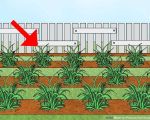
How to Keep Your Lawn Green All Year Round
Maintaining a lush, green lawn year-round is a goal for many homeowners, and it’s easier to achieve than you might think. Over the years, I’ve learned that keeping your lawn in top condition is all about consistent care and knowing when and how to provide the right treatments. If you’ve been struggling with your lawn or simply want to enhance its appearance, let me guide you through the process of maintaining a beautiful, vibrant lawn all year long.
1. Understand Your Lawn Type
Before diving into specific care techniques, it’s crucial to understand the type of grass you have. Different regions in the U.S. have different climates, and certain grass types thrive better in specific conditions. For example, cool-season grasses like Kentucky Bluegrass or Fescue are ideal for cooler climates, while warm-season grasses like Bermuda or Zoysia do better in hotter areas. Knowing your lawn’s grass type will help you adjust your care techniques accordingly.
2. Watering: The Foundation of a Healthy Lawn
One of the most important aspects of keeping your lawn green is proper watering. Lawns generally need about 1 to 1.5 inches of water per week, including rainfall. Watering deeply and less frequently is better than shallow, frequent watering. This encourages deep root growth, which helps the lawn better withstand heat and drought. Early morning is the best time to water your lawn, as it allows the grass to dry before nightfall, reducing the risk of disease.
3. Fertilizing for Growth and Health
Fertilization is another key factor in achieving a green, healthy lawn. I make sure to fertilize my lawn at least four times a year, depending on the grass type and local climate. The first application should be in the spring, as the grass is waking up from its winter dormancy. I use a slow-release fertilizer that feeds the lawn gradually, providing nutrients throughout the growing season. In the fall, I apply a high-potassium fertilizer to help the grass prepare for the winter months. Be careful not to over-fertilize, as this can lead to excessive growth or lawn damage.
4. Mowing Techniques: Keep it Trim
Proper mowing is essential for maintaining the health of your lawn. I’ve found that the key to a beautiful lawn is mowing regularly, but not too short. Set your mower height higher, around 3 inches for most grass types. This allows the grass to grow stronger roots and helps to prevent weeds from establishing. It also shades the soil, reducing moisture evaporation. I make sure to mow my lawn when it’s dry to avoid tearing the grass blades.
5. Aeration: Let Your Lawn Breathe
Aeration is a process that involves creating small holes in the lawn to allow air, water, and nutrients to reach the grass roots more effectively. It’s especially beneficial for lawns with heavy foot traffic or compacted soil. I usually aerate my lawn once a year in the early spring or fall. This helps the grass to grow stronger and more resilient, ensuring it stays green and healthy all year round.
6. Weed Control: Preventing Problems Before They Start
Weeds can quickly ruin the appearance of a lawn, but with proper care, they can be kept in check. I use a combination of pre-emergent herbicides and hand-pulling to prevent weeds from taking over. Pre-emergent herbicides work by preventing weed seeds from germinating, while hand-pulling helps remove existing weeds. Regular mowing also reduces the chances of weeds establishing themselves in the first place.
7. Overseeding: A Little Extra Help
Overseeding is a great way to thicken your lawn and repair damaged areas. I tend to overseed my lawn in the fall, as it’s the perfect time for cool-season grasses to establish themselves before the winter. I spread a thin layer of grass seed over the lawn and make sure to water it regularly until it germinates. This helps to fill in bare spots and gives my lawn a fuller, healthier look throughout the year.
8. Dealing with Seasonal Changes
Throughout the year, your lawn faces different challenges depending on the season. In the summer, heat and drought can cause the grass to go dormant. In the winter, cold temperatures and frost can slow growth. By adjusting your lawn care routine for each season, you can help it adapt and thrive. In the summer, I reduce watering to avoid overwatering during the hot months, and in the winter, I make sure to keep the lawn clear of debris and foot traffic to protect the grass.
9. Pest Control: Protecting Your Lawn from Damage
Finally, pests can wreak havoc on your lawn if left unchecked. From grubs to chinch bugs, various pests can damage your grass, leaving brown patches and thinning areas. I use a combination of natural remedies, like nematodes, and chemical treatments when necessary. Keeping my lawn healthy through proper watering, fertilizing, and aeration also helps to make it less susceptible to pests.
Keeping your lawn green and healthy year-round requires dedication and regular care. But with the right approach, you’ll be rewarded with a lawn that’s the envy of your neighborhood. Remember to monitor the condition of your lawn, adapt your care routine to the changing seasons, and stay consistent. Soon, you’ll have a lush, green lawn that thrives throughout the year.








